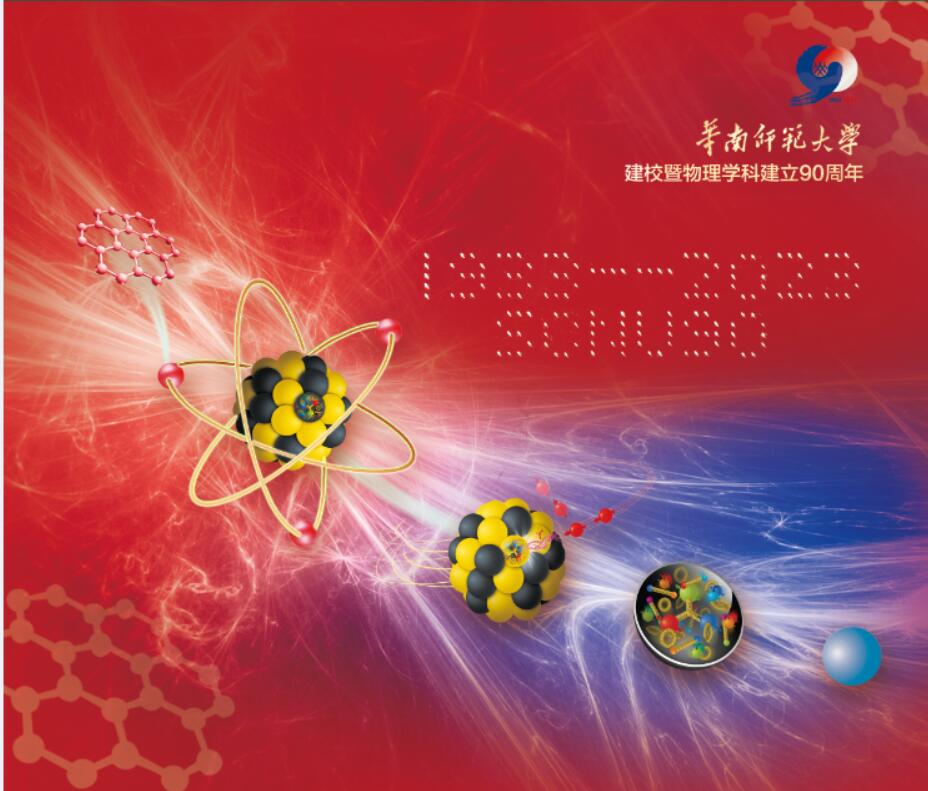Vol. 72, No. 20 (2023)
2023-10-20
Special topic
SPECIAL TOPIC — The 90th Anniversary of South China Normal University and Physics Discipline

2023, 72 (20): 200304.
doi: 10.7498/aps.72.20230993
Abstract +
One of the main goals of high-energy nuclear physics is to explore the fundamental properties of quark-gluon plasma (QGP), a new state of quantum chromodynamics (QCD) matter created in relativistic heavy-ion collisions, in which the energetic quarks and gluons, known as fast partons, created prior to the formation of the QGP, traverse the hot-dense medium and experience strong interactions with the constituents of the medium, and eventually lead to the attenuation of jet energy. Such a novel phenomenon, referred to as jet quenching, plays an essential role in probing the transport properties of the QGP. The objective of this paper is to review some of the latest experimental and theoretical progress of jet quenching, such as medium modification on the large $ p_{\rm T} $ hadrons, full jets, and jet substructures in heavy-ion collisions, as well as the challenges in the forefront theoretical investigations.
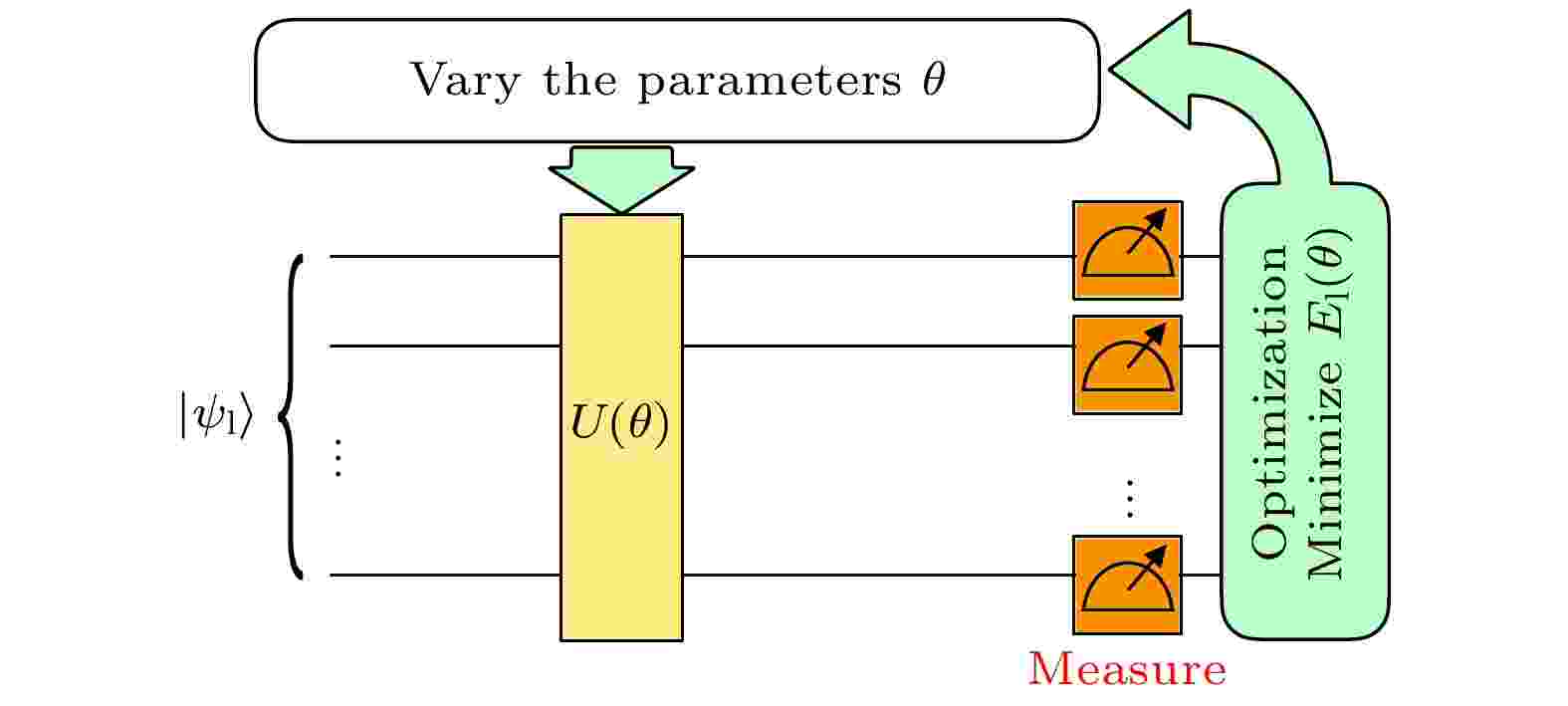
2023, 72 (20): 200303.
doi: 10.7498/aps.72.20230907
Abstract +
High-energy nuclear physics aims to explore and understand the physics of matter composed of quarks and gluons. However, it is intrinsically difficult to simulate high-energy nuclear physics from the first principle based quantum chromodynamics by using classical computers. In recent years, quantum computing has received intensive attention because it is expected to provide an ultimate solution for simulating high-energy nuclear physics. In this paper, we firstly review recent advances in quantum simulation of high-energy nuclear physics. Then we introduce some standard quantum algorithms, such as state preparation and measurements of light-cone correlation function. Finally, we demonstrate the advantage of quantum computing for solving the real-time evolution and the sign problems by studying hadronic scattering amplitude and phase structure of finite-temperature and finite-density matter, respectively.

2023, 72 (20): 201401.
doi: 10.7498/aps.72.20230908
Abstract +
In the conventional quark model, meson is made of one quark and one antiquark, and baryon is made of three quarks. Since the observation of the ${\rm{X}}(3872)$ in 2003 by Belle collaboration, numerous exotic candidates beyond the conventional quark model have been observed. Most of them are located in heavy quarkonium energy region. Several interpretations, e.g. compact multiquarks, hadronic molecules, hybrids, etc, are proposed to understand their internal structures. Hadronic molecules are based on the fact that most of exotic candidates have nearby thresholds, which makes them analogies of deuteron made of one proton and one neutron. Whether two or more hadrons can be form a hadronic molecule or not depends on their interactions. In this work, we study the ${\rm{P}}$ -wave ${\rm{B}}^{(*)}\bar{{\rm{B}}}^{(*)}$ interactions based on the ${\rm{e^+e^-}}\to {\rm{B}}^{(*)}\bar{{\rm{B}}}^{(*)}$ cross sections from Belle-II experiment to study whether their interaction can form vector bottomonium-like states or not. As ${\rm{B}}^{(*)}$ and $\bar{{\rm{B}}}^{(*)}$ mesons have bottom and antibottom quark, respectively, we work in the heavy quark limit, which respects both heavy quark spin symmetry and heavy quark flavor symmetry. In this framework, we construct effective contact potentials for $J^{{\rm{PC}}}=1^{--}$ ${\rm{P}}$ -wave ${\rm{B}}^{(*)}\bar{{\rm{B}}}^{(*)}$ interactions, by decomposing the ${\rm{B}}^{(*)}\bar{{\rm{B}}}^{(*)}$ dynamic channels into heavy-light basis. That, in the heavy quark limit, heavy and light degrees of freedoms are conserved individually makes the contact potentials in a very simple form. After solving the corresponding Lippmann-Schwinger equation, one can obtain the ${\rm{e^+e^-}}\to {\rm{B}}^{(*)}\bar{{\rm{B}}}^{(*)}$ scattering amplitudes. With these scattering amplitudes, we can deduce the corresponding cross sections,which can be compared with the experimental data directly. By fitting to the data, we find that the mass shifts of the considered bottomonia are small due to their small couplings to the ${\rm{B}}^{(*)}\bar{{\rm{B}}}^{(*)}$ continuum channels. As the result, the $\Upsilon(4{\rm{S}})$ , $\Upsilon(3{\rm{D}})$ , $\Upsilon(5{\rm{S}})$ and $\Upsilon(6{\rm{S}})$ vector bottomonia express theirselves as peaks at $10.58\; {\rm{GeV}}$ , $10.87\; {\rm{GeV}}$ , $11.03\; {\rm{GeV}}$ . The peak at $10.87\; {\rm{GeV}}$ is the interference between $\Upsilon(3{\rm{D}})$ and $\Upsilon(5{\rm{S}})$ . As there are only two data points around $10.63\; {\rm{GeV}}$ , we cannot obtain a very clear conclusion about the peak around this energy point. To further explore its nature, both detailed scan around this energy region in experiment and improved formula in theory are needed.
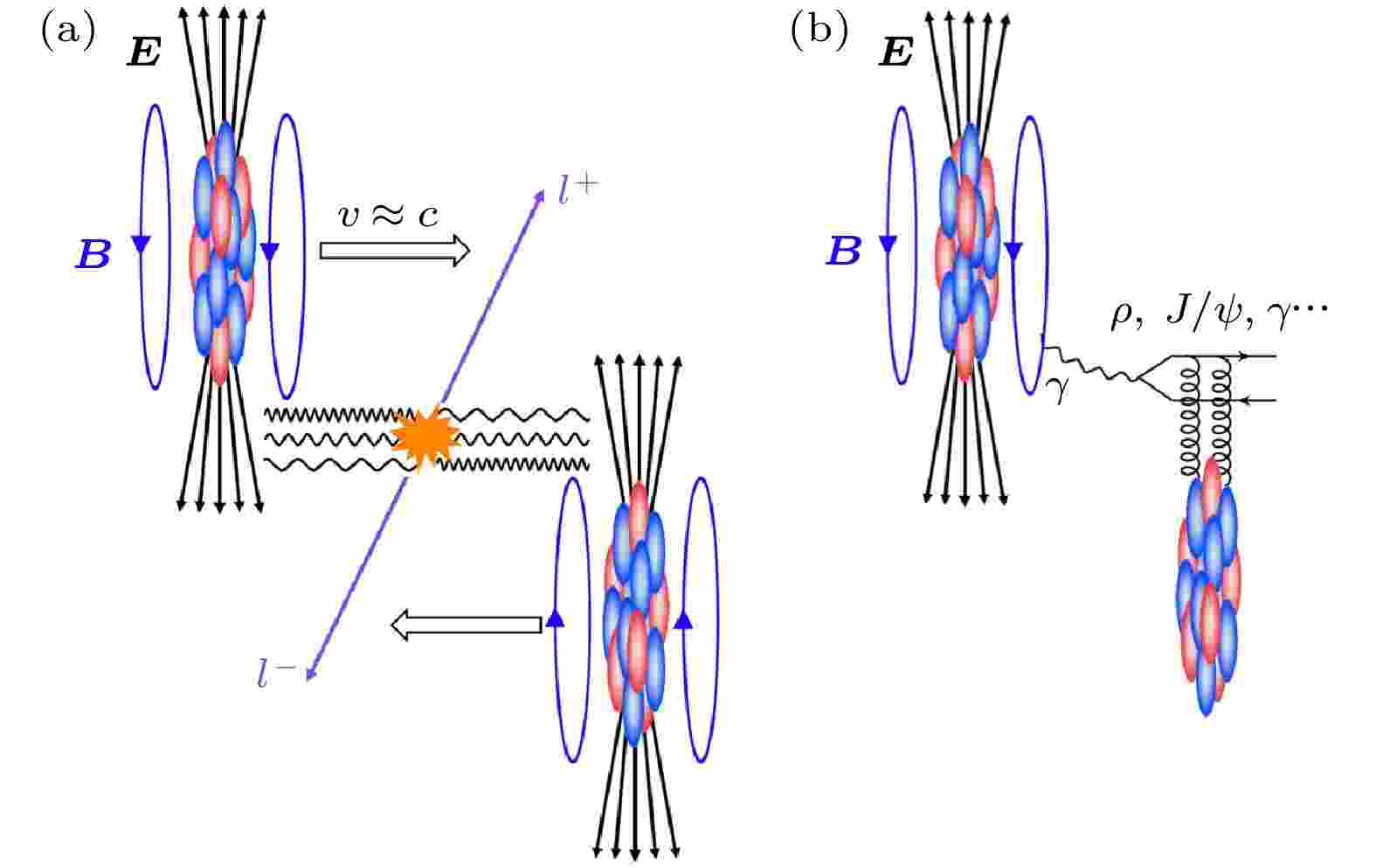
2023, 72 (20): 201201.
doi: 10.7498/aps.72.20230948
Abstract +
The Lorentz-boosted electromagnetic fields surrounding relativistic heavy ions with large charges can be treated as a flux of linearly polarized quasireal photons, which can interact via the photon-photon scattering to produce lepton antilepton pairs. Those photon-photon interactions can happen even in heavy-ion collisions with hadronic overlap, making an opportunity to probe the electromagnetic properties of the produced deconfined quark-gluon plasma. In this paper, we review the recent experimental progress of the impact parameter dependent photon-photon interactions in heavy-ion collisions, and discuss their essential role in probing the possible electromagnetic properties of quark-gluon plasma produced in hadronic heavy-ion collisions.
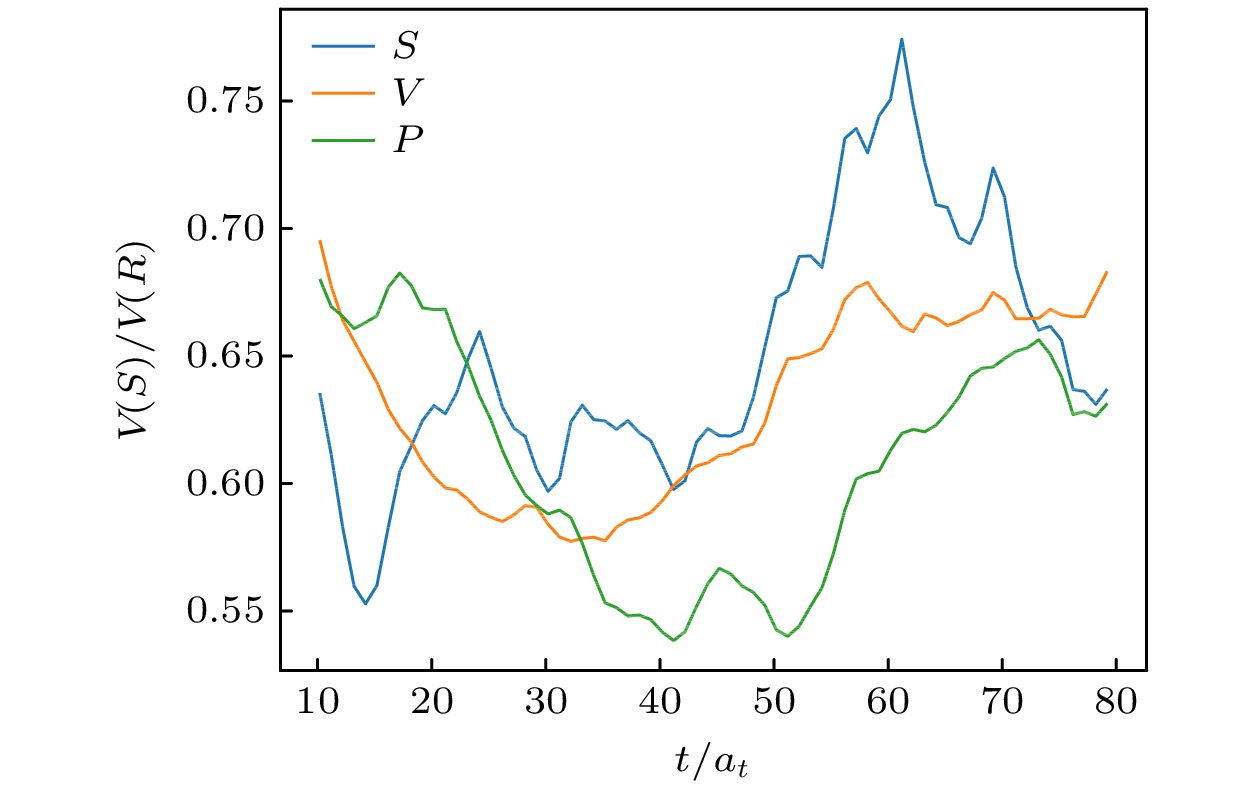
2023, 72 (20): 201101.
doi: 10.7498/aps.72.20230869
Abstract +
Understanding the statistical fluctuations of lattice observables over the gauge configurations is important both theoretically and practically. It provides a physical insight into tackling the famous signal-to-noise problem and the sign problem, and inspires new thoughts in developing methods to improve the signal of lattice calculations. Among many efforts, exploring the relationship between the real part and imaginary part of lattice numerical result is a new method to understand lattice signal and error, because both the real part and imaginary part come from the same sample of gauge field and their distributions on the gauge sample are related in principle. Specifically, by analyzing the distributions of the real part and imaginary part of quenched lattice two-point function with high statistics and non-zero momentum, this work proposes a possible quantitative formula connecting these two distributions as $R(x)=\displaystyle\int {\rm{d}}y S(y-x) \left[I(y) K(U_y)\right]$ , where $R(x)$ denotes the real-part distribution, $I(x)$ the imaginary-part distribution, $S(x)$ the underlying signal distribution and $K(U_x)$ a kernel function of the gauge field. This theoretical assumption has universal validity because the kernel function contains the gauge field information that determines all the distributions. The formula is numerically verified by calculating the non-trivial statistical correlations of the real part and the kernel-function-modified imaginary part under the further assumption of the kernel function. It is found that the most naïve guess of $K(U_x)=1$ does not work, which leads to no statistically significant correlation. Meanwhile, the assumption that $K(U_x)$ is only a sign function works well, giving rise to $\sim70\%$ correlation. Then, through the process of adding random distortions to the absolute values of the imaginary part, it is found that even a slight distortion, of around 1% could result in a significant reduction in the correlation between the real part and imaginary part down to less than 50% or lower. This essentially proves that the observed $\sim70\%$ correlation is highly non-trivial and the hypothesis that $K(U_x)$ is a sign function captures at least some of the physical mechanisms behind the scenes. Employing this correlation, the variance of lattice results can be improved by around 40%. It is not a significant improvement in practice; however, this study offers an innovative strategy to understand the source of statistical uncertainties in lattice QCD and to improve the signal-to-noise ratio in lattice calculation. Further research on the ability to use machine learning on various more accurate lattice data will hopefully give better instructions and constraint on the form of the kernel function.
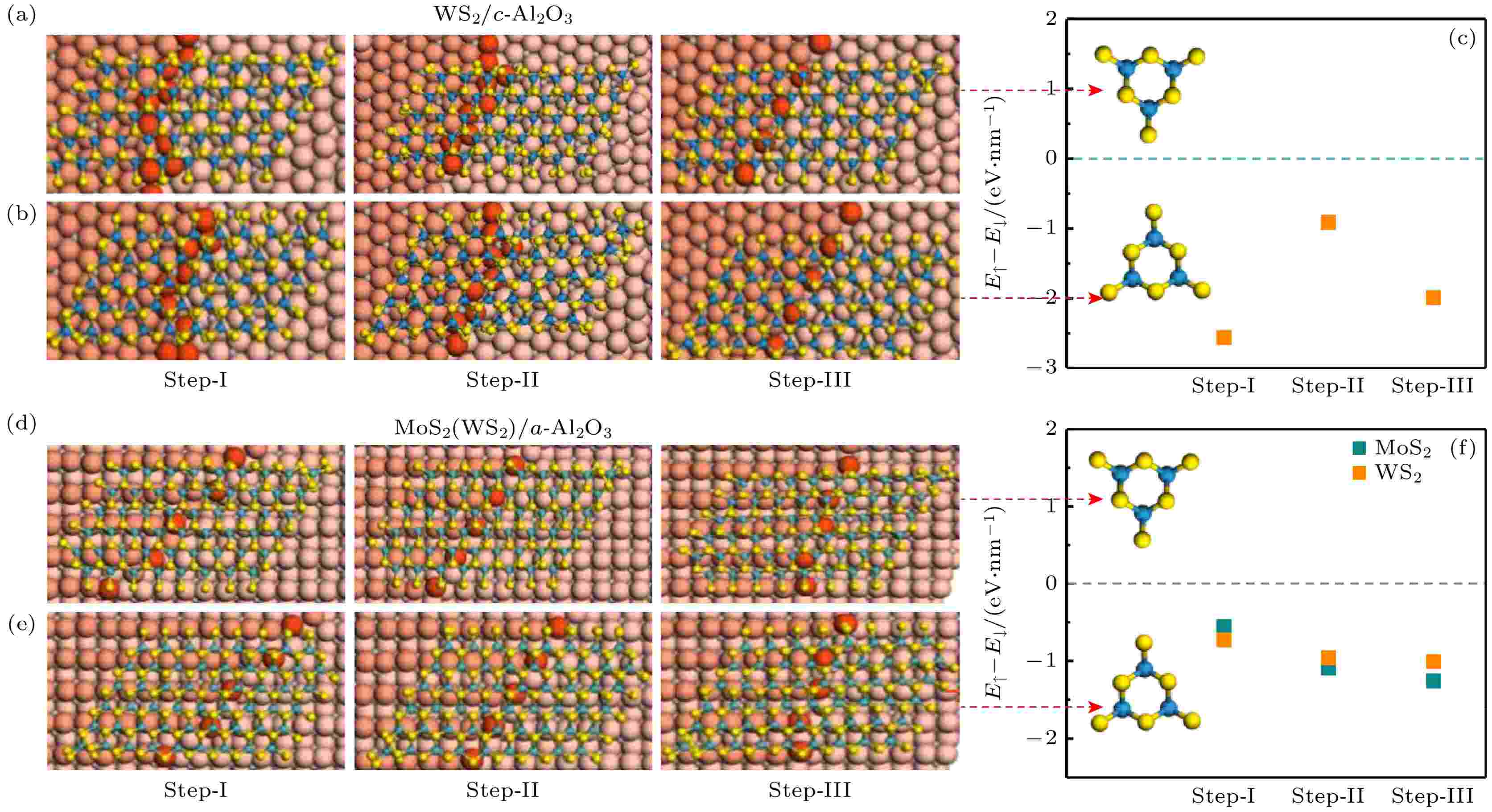
2023, 72 (20): 208101.
doi: 10.7498/aps.72.20230887
Abstract +
Since the successful mechanical exfoliation of graphene in 2004, two-dimensional materials have aroused extensive research and fast developed in various fields such as electronics, optoelectronics and energy, owing to their unique structural and physicochemical properties. In terms of synthesis methods, researchers have made further advancements in the atomic step method, building upon traditional techniques such as mechanical exfoliation, liquid-phase exfoliation, vapor-phase deposition, wet chemical synthesis, and nanomaterial self-assembly. These efforts aim to achieve high-quality large-scale two-dimensional single crystal materials. In this article, the representative research on the growth of two-dimensional single crystal materials controlled by atomic steps in recent years is reviewed in detail. To begin with, the research background is briefly introduced, then the main synthesis methods of two-dimensional single crystal materials are discussed and the challenges and reasons for the difficulty in epitaxially preparing non-centrosymmetric materials are analyzed. Subsequently, the growth mechanisms and recent advances in the preparation of two-dimensional single crystal materials assisted by atomic steps are presented. The theoretical basis and universality of atomic step-controlled nucleation in two-dimensional single crystal material are analyzed. Furthermore, the challenges and future directions for achieving large-scale, directionally controllable two-dimensional single crystal materials are predicted. Finally, potential applications of the step method in the future scalable chip device fabrication are systematically discussed.

2023, 72 (20): 207401.
doi: 10.7498/aps.72.20230830
Abstract +
The magnetic impurity effects and the existence of bound states (i.e. Yu-Shiba-Rusinov states) in superconductors have been a topic of great interest. Recently, the existence of Yu-Shiba-Rusinov states in graphene-based superconducting materials has been successfully observed in the laboratory. In this work, an effective Hamiltonian in real space is established to describe the superconducting state of graphene materials by considering a single magnetic impurity. Thus the Bogoliubov-de Gennes (BdG) equation is constructed and the self-consistency calculations of the superconducting order parameter are conducted. On this basis, the effects of magnetic impurities on graphene-like superconductors are investigated theoretically. The numerical results show that the Yu-Shiba-Rusinov state can only appear in the symmetry of the superconducting pair of the traditional s-wave coupling. The position and strength of the bound state are related to the magnetic moment of the impurity, showing a notable electron-hole asymmetry. There are no bound states in the energy gap for other pairing symmetries. This theoretical calculation not only provides a reasonable explanation for experimental phenomena, but also demonstrates that the heterojunction system composed of graphene and traditional superconductors has an s-wave superconducting pairing induced by the proximity effect in the graphene layer.

2023, 72 (20): 208502.
doi: 10.7498/aps.72.20230913
Abstract +
Ferrimagnetic domain walls have received more and more attention because of their interesting physics and potential applications in future spintronic devices, particularly attributing their non-zero net magnetization and ultrafast dynamics. Exploring effective methods of driving domain walls with low energy consumption and high efficiency can provide important information for experimental design and device development. In this work, we study theoretically and numerically the dynamics of ferrimagnetic domain wall driven by the sinusoidal microwave magnetic field using the collective coordinate theory and Landau-Lifshitz-Gilbert simulations of atomistic spin model. It is revealed that the microwave field drives the propagation of the domain wall when the frequency falls into an appropriate range, which allows one to modulate the domain wall dynamics through tuning field frequency. Specifically, below the critical frequency, the domain wall velocity is proportional to the field frequency and the net angular momentum, while above the critical frequency, the domain wall velocity decreases rapidly to zero . The physical mechanisms of the results are discussed in detail, and the influences of the biaxial anisotropy and other parameters on the velocity of domain wall are studied. It is suggested that the wall dynamics can be effectively regulated by adjusting the basic magnetic structure and magnetic anisotropy, in addition to the external microwave field frequency. This work uncovers the interesting dynamics of ferrimagnetic domain wall driven by sinusoidal microwave magnetic field, which is helpful for designing domain wall-based spintronic device.
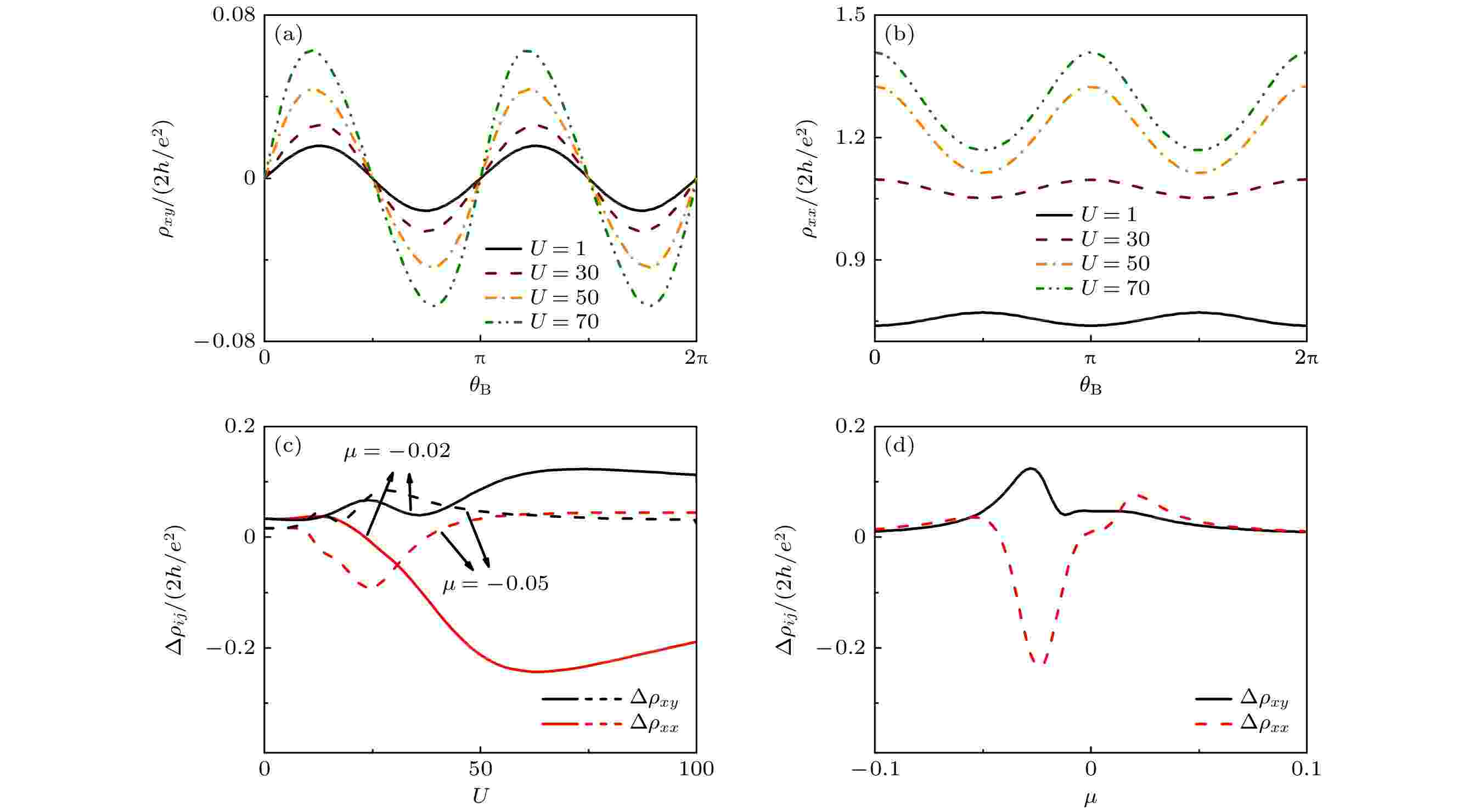
2023, 72 (20): 207201.
doi: 10.7498/aps.72.20230905
Abstract +
The planar Hall effect (PHE) is one of the hot topics in the field of condensed matter physics. In recent years, the PHE has received great attention especially in topological materials such as topological insulators and topological semimetals, and great progress has been made. Unlike the scenario in ordinary Hall effect, the transverse current, magnetic field, and electric field in the PHE can appear in the same plane and cannot be explained by the Lorentz force, which largely depends on the anisotropy of the magnetoresistivity. With the development of nonlinear effect in topological material, the PHE has been extended to a nonlinear regime, which has also been extensively studied experimentally. To explain the linear and nonlinear PHEs observed experimentally, various microscopic mechanisms have been proposed theoretically. In this paper, the research progress of the linear and nonlinear PHEs of topological materials is introduced theoretically and experimentally, and various extrinsic and intrinsic mechanisms leading to the linear and nonlinear PHEs are analyzed in depth. The physical mechanisms of the linear PHE mainly include the tilt of Dirac cone, magnon scattering, chiral anomaly (or chiral-anomaly-like), shift effect, and Berry curvature, whereas ones of the nonlinear PHE mainly include the nonlinear Drude term, shift effect, Berry curvature dipole, magnon scattering, chiral anomaly, and Berry-connection polarizability. In addition, the relevant problems to be solved and the future development directions are also proposed.

2023, 72 (20): 207501.
doi: 10.7498/aps.72.20230954
Abstract +
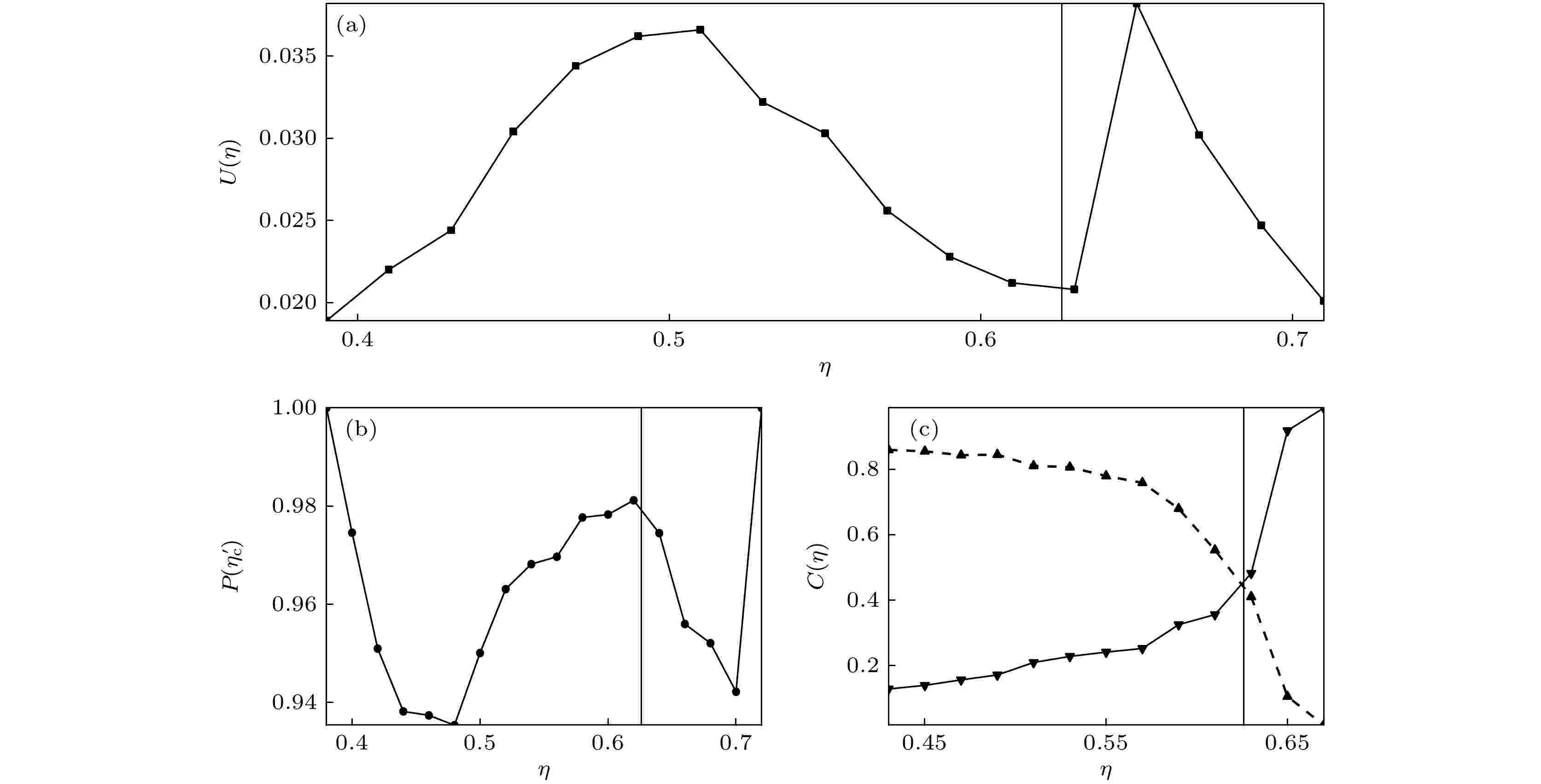
2023, 72 (20): 200701.
doi: 10.7498/aps.72.20230896
Abstract +
We develop the neural network based “learning from regression uncertainty” approach for the automatic detection of phases of matter in nonequilibrium active systems. Taking the flocking phase transition of self-propelled active particles described by the Vicsek model for example, we find that after training a neural network for solving the inverse statistical problem, i.e. for performing the regression task of reconstructing the noise level from given samples of such a nonequilibrium many-body complex system’s steady state configurations, the uncertainty of regression results obtained by the well-trained network can actually be utilized to reveal possible phase transitions in the system under study. The noise level dependence of regression uncertainty is assumed to be in a non-trivial M-shape, and its valley appears at the critical point of the flocking phase transition. By directly comparing this regression-based approach with the widely-used classification-based “learning by confusion” and “learning with blanking” approaches, we show that our approach has practical effectiveness, efficiency, good generality for various physical systems across interdisciplinary fields, and a greater possibility of being interpretable via conventional notions of physics. These approaches can complement each other to serve as a promising generic toolbox for investigating rich critical phenomena and providing data-driven evidence on the existence of various phase transitions, especially for those complex scenarios associated with first-order phase transitions or nonequilibrium active systems where traditional research methods in physics could face difficulties.

2023, 72 (20): 200501.
doi: 10.7498/aps.72.20230825
Abstract +
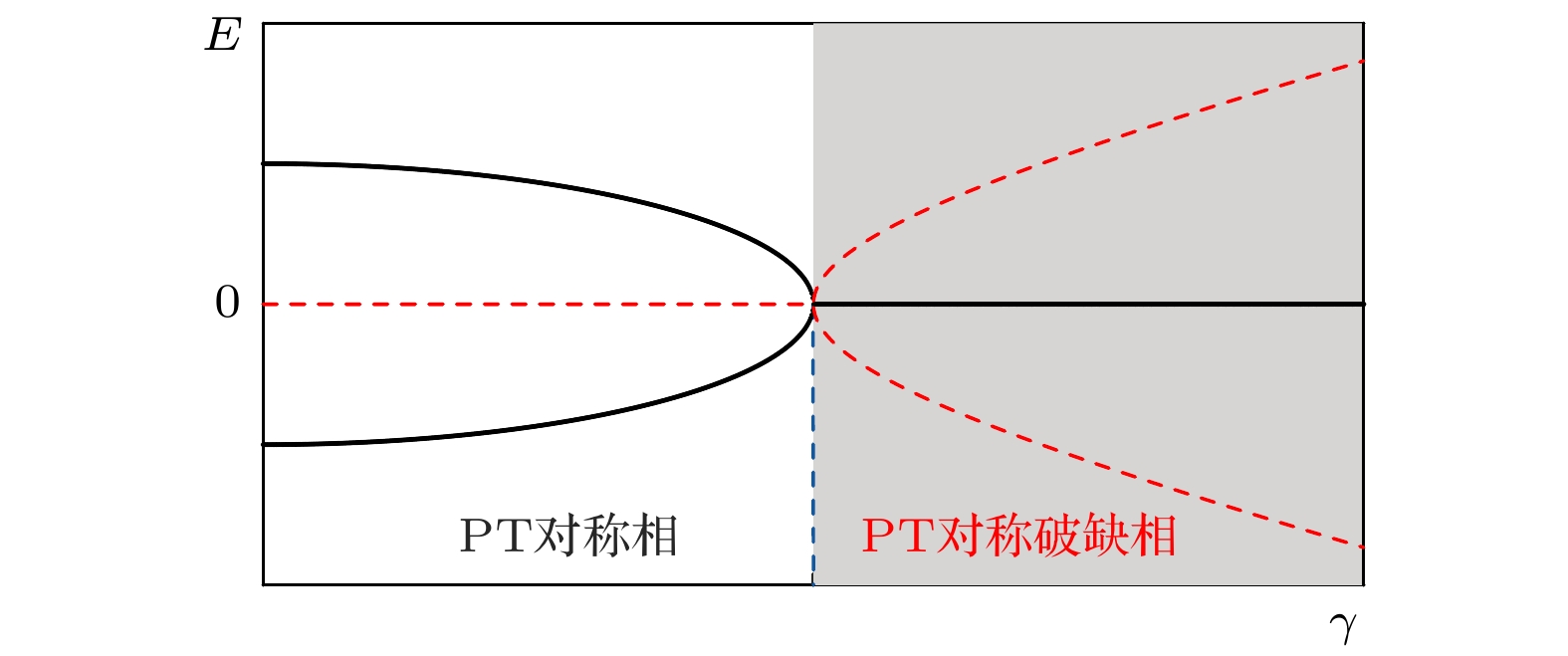
2023, 72 (20): 200301.
doi: 10.7498/aps.72.20230914
Abstract +
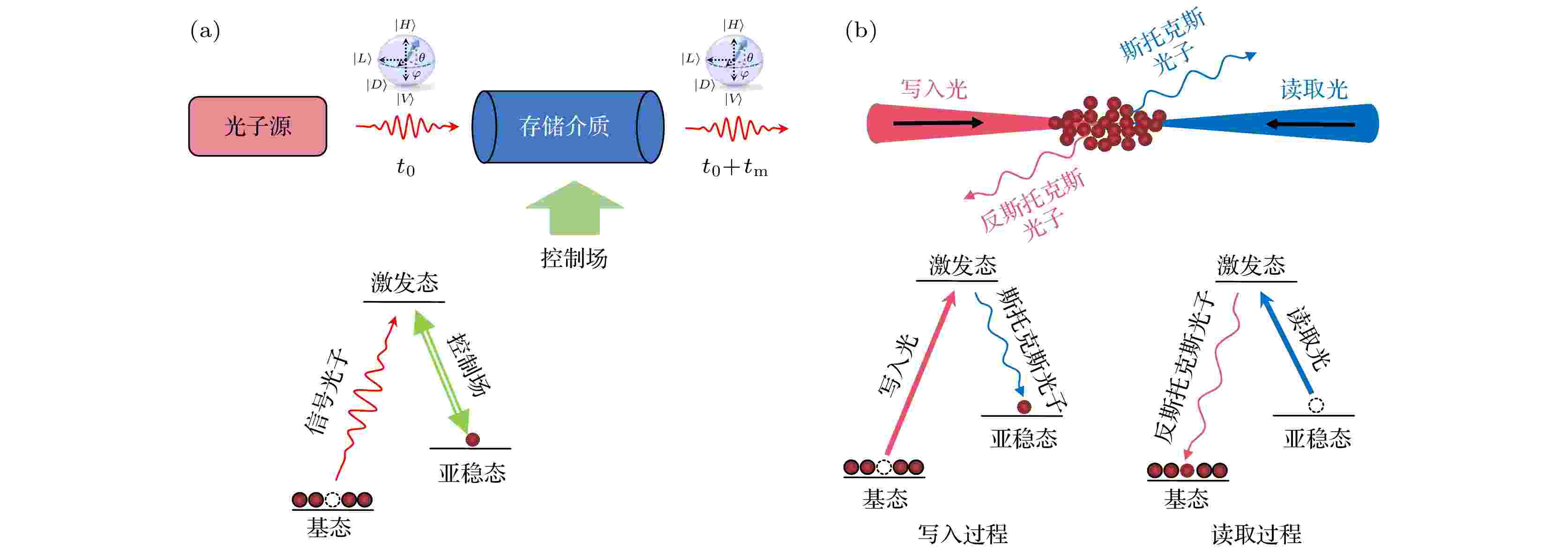
2023, 72 (20): 206701.
doi: 10.7498/aps.72.20231203
Abstract +
Light is the best carrier of information in quantum network. By exploring the interaction of light with matter, quantum memory technology can be further developed. Quantum memory can simultaneously receive and obtain optical quantum information on demand, which is the basis for establishing large-scale quantum computing and long-distance quantum communication. However, the performance of quantum memory directly affects its practical application process and the progress of quantum information technology. In the past two decades, quantum memory in various physical systems and quantum information protocols has been intensively studied, its performance has been significantly improved, and its relevant applications have been widely demonstrated. In this paper, we firstly sort the research progress of quantum memory metrics in the past ten years, and discuss the development of efficiency, lifetime, fidelity and mode capacity in detail according to the characteristics of cold atom systems and solid-state doped ion crystal systems. Secondly, the recent typical applications of quantum memory in quantum entanglement, memory-enhanced multi-photon processes, and quantum interference of different particles are introduced. Finally, the future development of quantum storage is prospected and summarized.

2023, 72 (20): 200601.
doi: 10.7498/aps.72.20230862
Abstract +
Quantum Fisher information bounds the ultimate precision limit in the parameter estimation and has important applications in quantum metrology. In recent years, the theoretical and experimental studies of non-Hermitian Hamiltonians realized in quantum systems have attracted wide attention. Here, the parameter estimation based on eigenstates of non-Hermitian Hamiltonians is investigated, and the corresponding quantum Fisher information and quantum Cramér-Rao bound for the single-parameter and two-parameter estimations are given. In particular, the quantum Fisher information about estimating intrinsic momentum and external parameters in the non-reciprocal and gain-and-loss Su-Schrieffer-Heeger models, and non-Hermitian versions of the quantum Ising chain, Chern-insulator model and two-level system are calculated and analyzed. For these non-Hermitian models, the results show that in the case of single-parameter estimation in these non-Hermitian models, the quantum Fisher information increases significantly in the gapless regime and near the exceptional points, which can improve the accuracy limit of parameter estimation. For the two-parameter estimation, the determinant of the quantum Fisher information matrix also increases obviously near the gapless and exceptional points. In addition, a higher overall accuracy can be achieved in the topological regime than in the trivial regime, and the topological bound in two-parameter estimation can be determined by the Chern number.
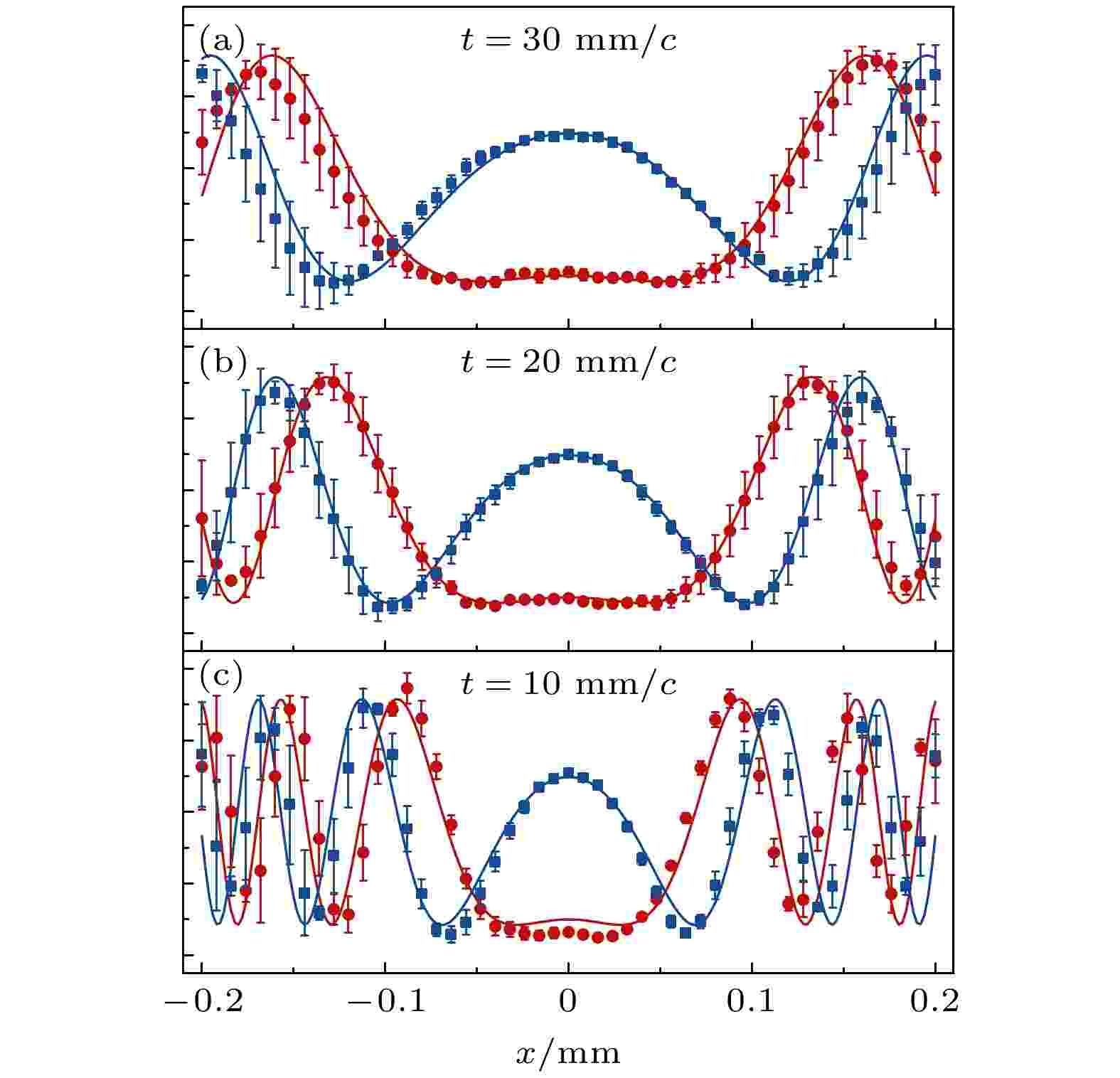
2023, 72 (20): 200305.
doi: 10.7498/aps.72.20230902
Abstract +
The propagator plays a central role in path integral theory and therefore has significant value in various fields of modern quantum physics, where path integral representations can be used. However, owing to the fact that it has not been directly measured in experiment, progress of experimental studies of quantum systems based on path integral representations has been seriously limited. Recently, we proposed a propagator measurement scheme based on the direct measurement of the wave function and successfully performed the first experimental measurement of the propagator by using a single photon experiment. Furthermore, in this study, the quantum principle of least action is demonstrated for the first time. This research successfully addresses the technical challenges of path integral experimental studies. In this work, we review the research progress in this field, including a brief introduction to the basic concepts and research progress of direct wave function measurement, and a detailed description of the theoretical model, experimental design, and experimental results of propagator measurement. Finally, we introduce an important application example, which can serve as the experimental demonstration of the quantum principle of least action through propagator measurement. The research progress of propagator measurement reviewed in this work will provide important references for future experimental studies by using this method.

2023, 72 (20): 200502.
doi: 10.7498/aps.72.20230842
Abstract +
Coupled Stuart-Landau limit-cycle system serves as an important paradigmatic model for studying synchronization transitions and collective dynamics in self-sustained nonlinear systems with amplitude degree of freedom. In this paper, we extensively investigate three typical solvable collective behaviors in globally coupled Stuart-Landau limit-cycle systems under mean-field feedback: incoherence, amplitude death, and locked states. In the thermodynamic limit of $N\rightarrow\infty$ , the critical condition characterizing the transition from incoherence to synchronization is explicitly obtained via performing the linear stability of the incoherent states. It is found that the synchronization transition occurs at a smaller coupling strength when the strength of mean-field feedback is gradually enhanced. The stable regions of amplitude death are theoretically obtained via an analysis of the linear stability of coupled systems around the origin. The results indicate that the existence of mean-field feedback can effectively eliminate the amplitude death phenomenon in the coupled systems; furthermore, the existence of locked states is analyzed theoretically, and in particular, the boundary of stable amplitude death region is re-derived from the self-consistent relation of the order parameter for the locked states. This work reveals the key role of mean-field feedback in controlling the collective dynamics of coupled nonlinear systems, deepens the understanding of the influence of mean-field feedback technology on the coupling-induced collective behaviors, and is conductive to our further understanding of the emerging rules and the underlying mechanisms of self-organized behavior in complex coupled systems.
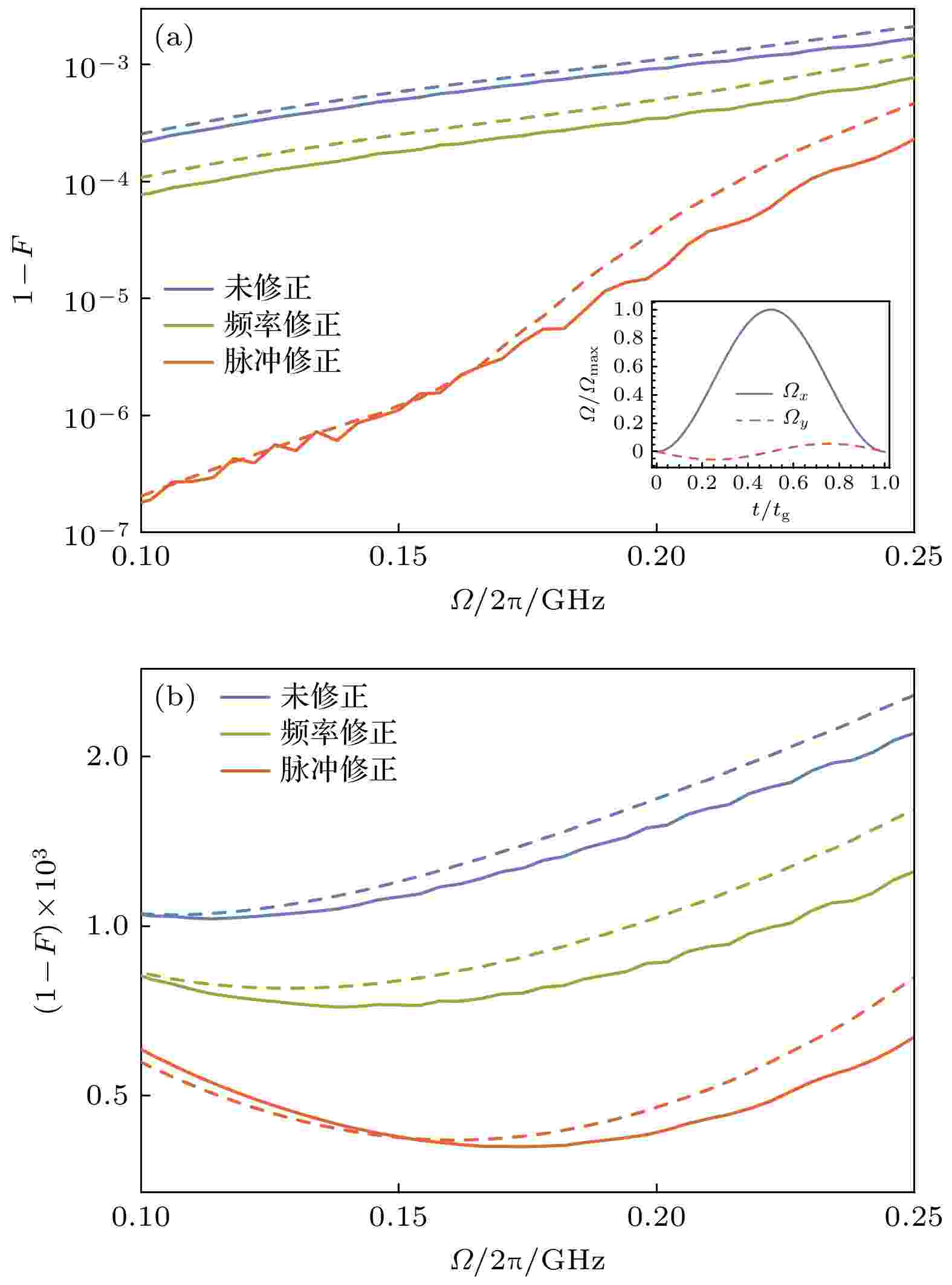
2023, 72 (20): 200302.
doi: 10.7498/aps.72.20230906
Abstract +
Semiconductor quantum dot qubits are one of the most promising candidates for quantum computing. Among them, singlet-triplet qubits have attracted much attention due to their excellent properties of all-electric control and accurate readout. To improve qubit immunity to charge noise, strong driving pulses are usually introduced to make operation as fast as possible. However, the complex dynamics induced by strong driving pulses make the rotating wave approximation inapplicable and hinder the implementation of high-fidelity qubit operation. In this work, we present a method of utilizing simple quadrature pulses to correct errors of high-frequency oscillatory terms induced by strong driving. A scheme to obtain these pulses is proposed based on a full quantization of the system and derivative removal by adiabatic gate (DRAG) theory, as the former clarifies the elementary processes of strong driving effects and enables the latter to find correction pulse shapes. The numerical simulation results show that, a NOT gate with 99.99% fidelity and gate time as short as 2 ns can be achieved with the help of the control pulses of this method, which indicates that the control error brought by strong driving is no longer a limiting factor. In particular, NOT gate fidelity higher than 99.9% is achievable even when the charge noise is at a level of $ 2\ \mu{\rm{eV}} $ . Notice that this method can be applied to any resonant-driving single-qubit rotation but not just NOT gates. Therefore, our approach will facilitate qubits to realize fast, high-fidelity single-qubit gates under charge noise.
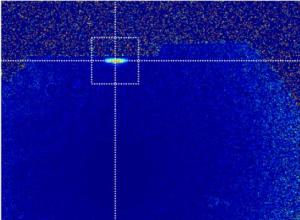
2023, 72 (20): 200306.
doi: 10.7498/aps.72.20230985
Abstract +
The hybrid quantum system composed of superconductor and cold atoms is expected to achieve fast quantum gates, long-life quantum storage and long-distance transmission through optical fibers, making it one of the most promising hybrid quantum systems to realize optical interconnection between two superconducting quantum computers. In this paper, we comprehensively review the recent research advancements in the optical interconnection of two superconducting quantum computers, based on the superconductor and cold atoms hybrid quantum system, specifically the review covers the coherent coupling between superconducting chips and cold atoms, the coherent microwave-to-optics conversion, and the long-range microwave interconnection between superconducting qubits and quantum converters. The system is expected to provide a physical and technical foundation for practical optical-fiber interconnection of two superconducting quantum computers, and have broad applications in distributed superconducting quantum computation and hybrid quantum networks.
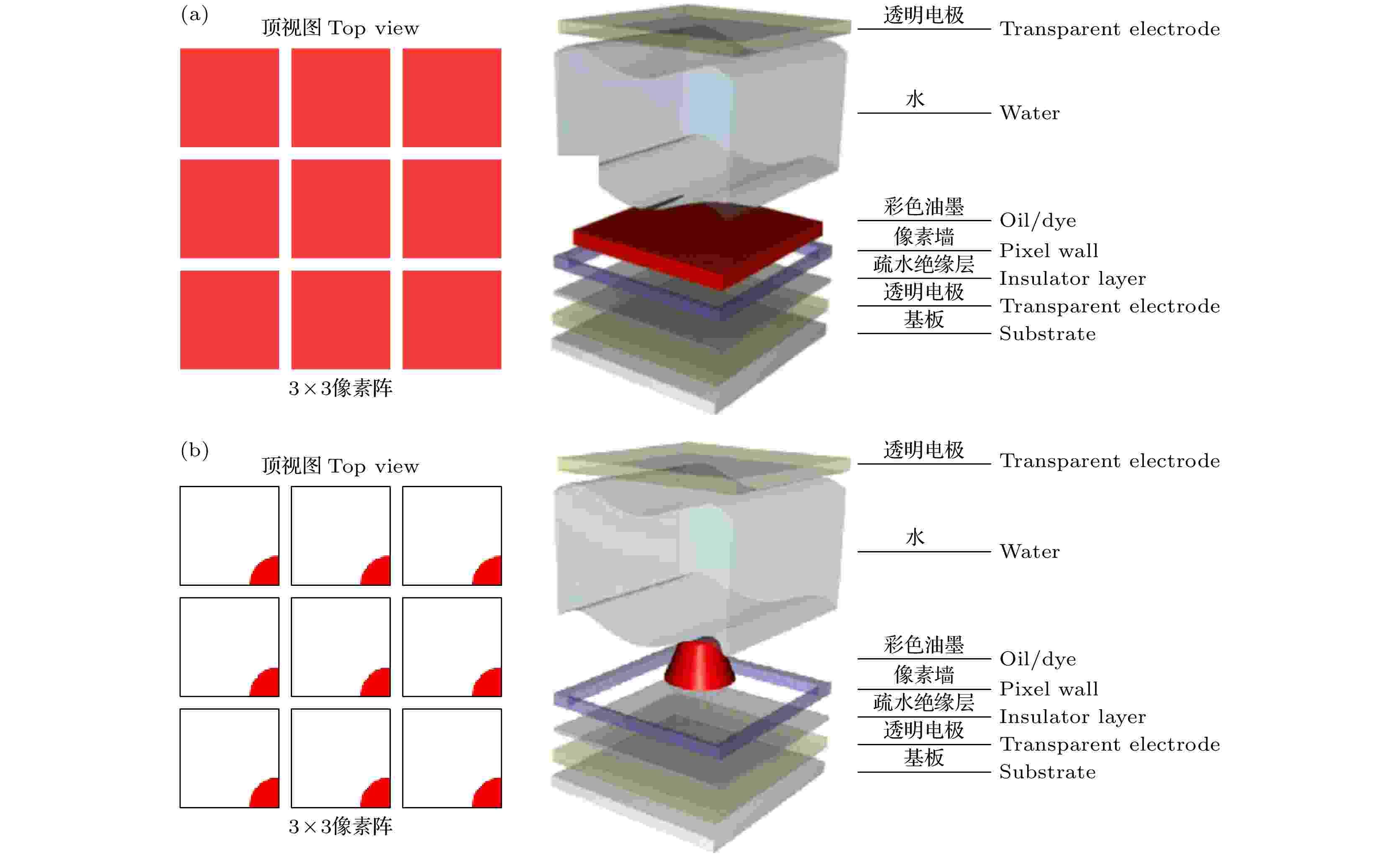
2023, 72 (20): 208501.
doi: 10.7498/aps.72.20230837
Abstract +
Electrowetting refers to the phenomenon of modifying the surface tension between a liquid and a solid by adjusting the externally applied electric potential between the liquid and solid electrodes, thereby changing the contact angle between the two and causing a deformation and displacement of the droplets. Electrowetting electronic paper display is a new reflective “paper-like” display technology based on a rapid response microfluidic control technology. It has the advantages of low energy consumption, visual health, and flexibility of commercial electrophoretic electronic paper display products, while breaking through the bottlenecks of “full-color” and “video-speed response” that currently restrict the application of electronic paper display technology. In this paper, several physical directions involved in electrowetting display devices, especially wetting and electrowetting, binary phase fluid mechanics, microscopic and interfacial physics, photophysics, dielectric physics, thermophysics, and transient physics, are systematically reviewed; the basic principles of device operation, microscopic and mesoscopic physical pictures, internal mechanisms of device operation, and device reliability are also discussed in detail.
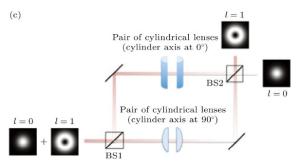
2023, 72 (20): 204207.
doi: 10.7498/aps.72.20231521
Abstract +
Vortex beams have attracted extensive attention in recent decade due to the carried optical orbital angular momentum (OAM). Vortex beams carrying different OAM modes are orthogonal to each other, and thus have become highly promising in realizing high-capacity optical communication systems. This review is to introduce the fundamental principles of optical OAM mode demultiplexing, recent advances in the fabrication techniques and emerging applications in high-capacity optical communications. First, this review introduces the development history of the working principle of OAM mode demultiplexer. Subsequently, a variety of preparation techniques and emerging applications of OAM mode demultiplexing are discussed in detail. Finally, we provide an in-depth analysis and outlook for the future trends and prospects of the OAM mode demultiplexer.
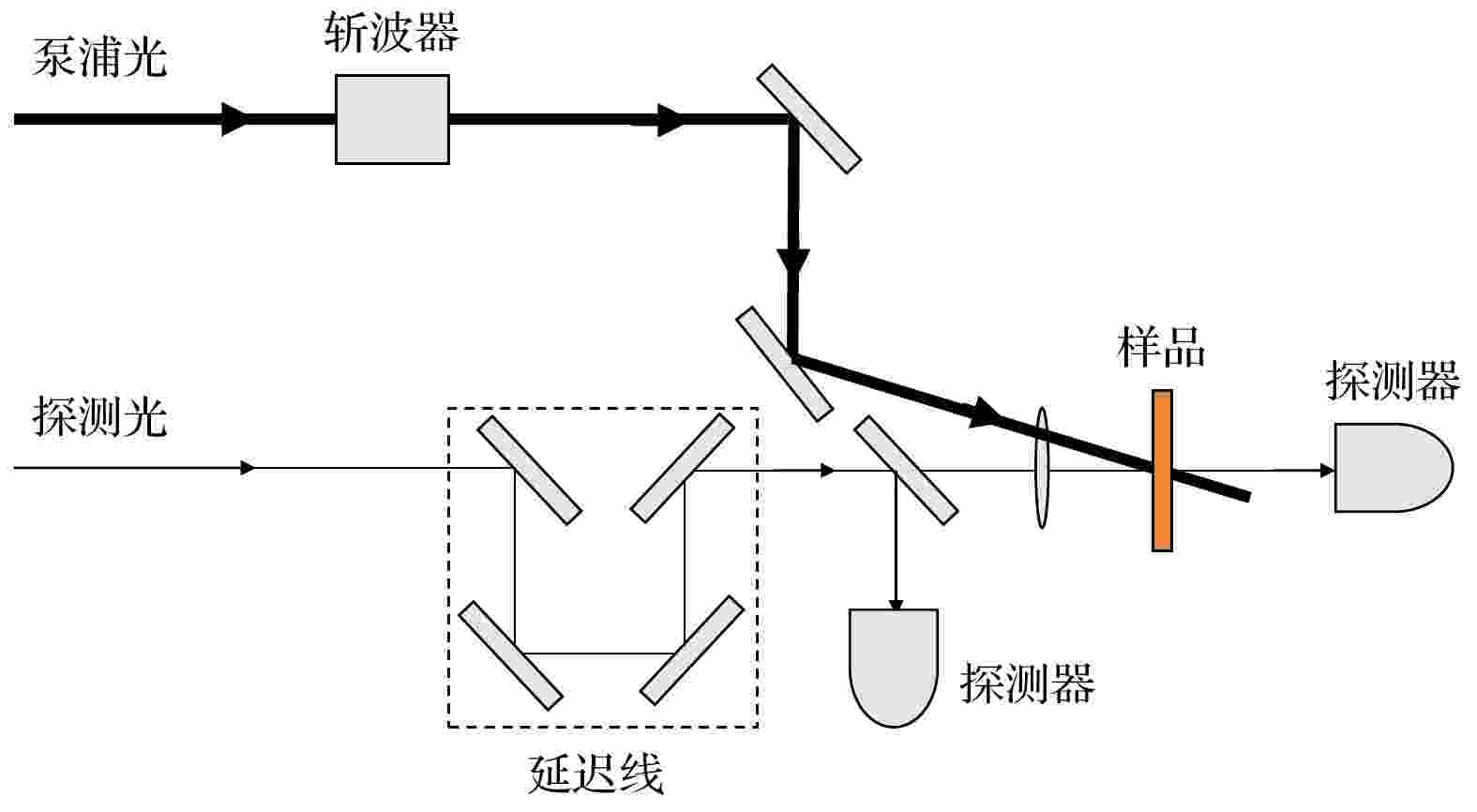
2023, 72 (20): 204204.
doi: 10.7498/aps.72.20230911
Abstract +
Nondegenerate two-photon absorption is a nonlinear optical effect in which two photons with different energy are absorbed by a medium simultaneously, resulting in a single electron transition from ground state to excited state through an intermediate virtual state. Compared with the degenerate two-photon absorption coefficient, the absorption coefficient of nondegenerate two-photon absorption is increased by tens or even hundreds of times due to the intermediate resonance effect, so it has great potentials in many nonlinear optical applications. Firstly, the basic principle of two-photon absorption is introduced and the enhancement mechanism of non-degenerate two-photon absorption is explained in this paper. Secondly, the basic method of measuring two-photon absorption is introduced in detail. Thirdly, the reports on nondegenerate two-photon absorption of three-dimensional semiconductor materials and two-dimensional materials are reviewed. Finally, the application progress of infrared detection and imaging, two-photon fluorescence microscope, all-optical switch and optical modulation is summarized, and the future research in this field is summarized and prospected.
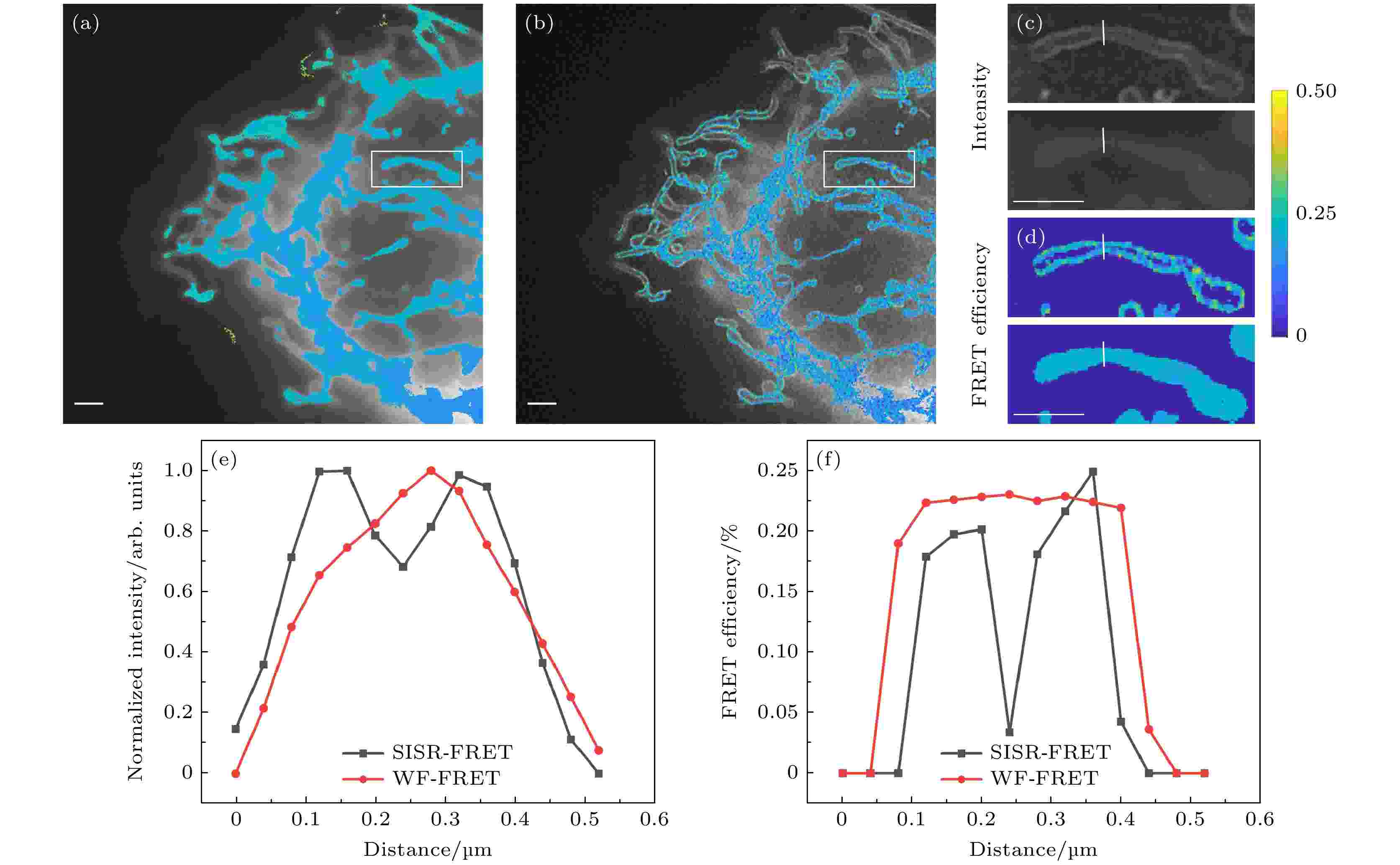
2023, 72 (20): 208701.
doi: 10.7498/aps.72.20230853
Abstract +
The Structured illumination (SI)-based super resolution fluorescence resonance energy transfer (SR-FRET) imaging technique, known as SISR-FRET, enables the investigation of molecular structures and functions in cellular organelles by resolving sub-diffraction FRET signals within living cells. The FRET microscopy offers unique advantages for quantitatively detecting dynamic interactions and spatial distribution of biomolecules within living cells. The spatial resolution of conventional FRET microscopy is limited by the diffraction limit, and it can only capture the average behavior of these events within the resolution limits of conventional fluorescence microscopy. The SISR-FRET performs sequential linear reconstruction of the three-channel SIM images followed by FRET quantitative analysis by using a common localization mask-based filtering approach. This two-step process ensures the fidelity of the reconstructed SR-FRET signals while effectively removing false-positive FRET signals caused by SIM artifacts. However, the slow imaging speed resulting from the switching of excitation-emission channels in SISR-FRET imaging limits its application in fast imaging scenarios. To address this issue, this study proposes a dual-channel structured illumination super-resolution quantitative FRET imaging system and method. By incorporating an FRET dual-channel imaging and registration module into the imaging pathway, the spatial switching and channel multiplexing of the SISR-FRET excitation-emission channels are achieved. Combining the image reconstruction algorithm with channel sub-pixel registration correction, the dual-channel SISR-FRET technique enhances the temporal resolution by 3.5 times while preserving the quantitative super-resolution FRET analysis. Experimental results are obtained by using a multi-color SIM system to perform super-resolution imaging of living cells expressing mitochondria outer membrane FRET standard plasmids. These experiments validate the improved spatial and temporal resolution of dual-channel SISR-FRET and the fidelity of FRET quantification analysis. In summary, this research presents a novel dual-channel structured illumination super-resolution FRET imaging system and method. It overcomes the limitations of slow imaging speed in SISR-FRET by realizing the spatial switching and channel multiplexing of excitation-emission channels. The proposed technique enhances the temporal resolution while maintaining quantitative analysis of super-resolution FRET. Experimental validation demonstrates the increased spatial and temporal resolution of dual-channel SISR-FRET and the accuracy of FRET quantification analysis. This advancement contributes to the study of molecular structures and functions in cellular organelles, providing valuable insights into the intricate mechanisms of living cells.
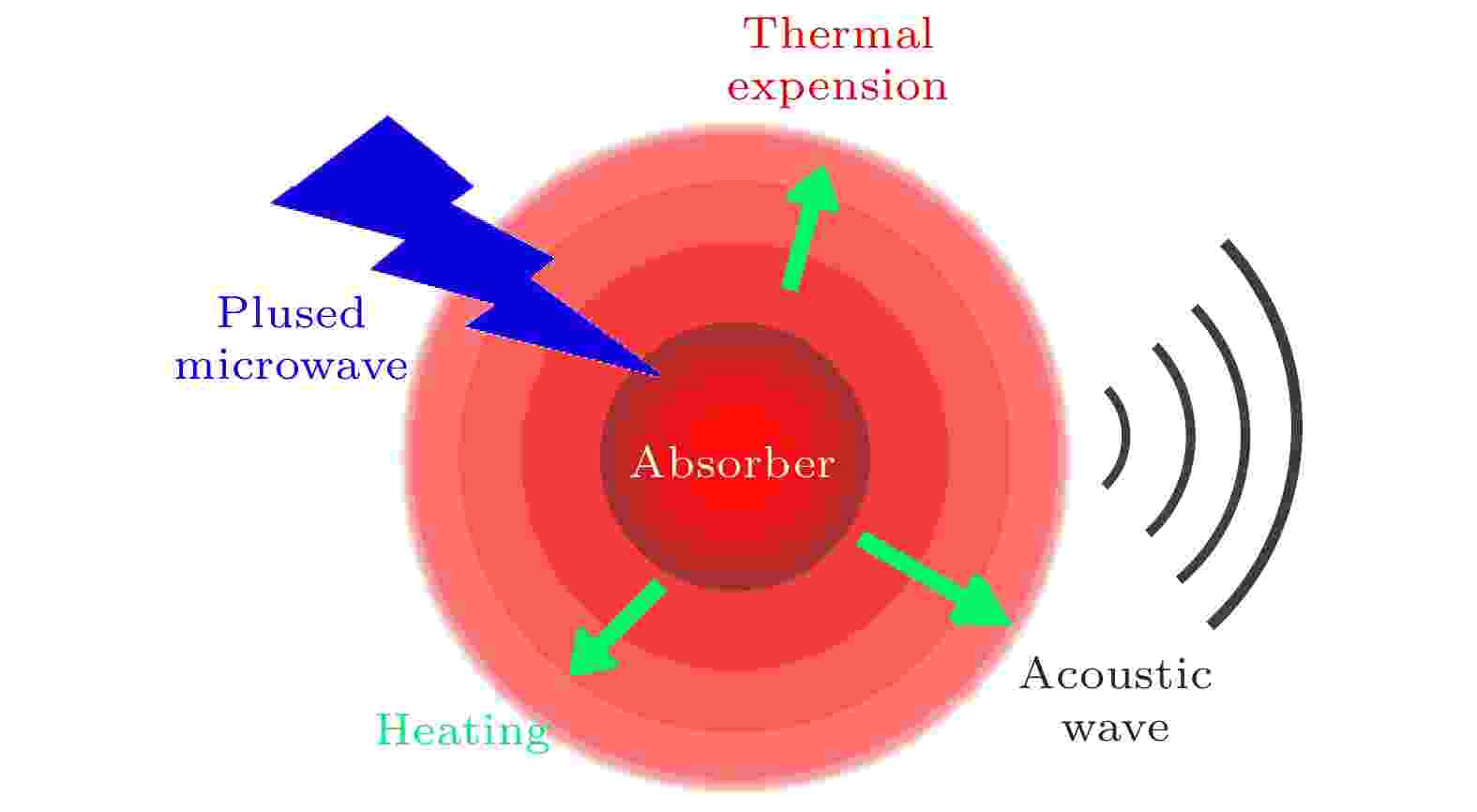
2023, 72 (20): 204301.
doi: 10.7498/aps.72.20230732
Abstract +
Microwave thermoacoustic imaging (MTAI) is an exciting imaging technique rooted from the underlying principle of exploiting the distinct electrical properties of biological tissues. By using short-pulsed microwaves as a stimulation source and their interaction with the human body, MTAI has paved the way for revolutionary advancements in medical imaging. When microwaves are absorbed by polar molecules and ions within the tissues, an ingenious thermoelastic effect gives rise to ultrasound waves. These ultrasound waves, brimming with invaluable pathological and physiological insights, propagate outward, carrying the essence of the composition and functionality of biological tissue. Through a meticulous collection of ultrasound signals from all directions surrounding the tissue, it becomes possible to reconstruct intricate internal structures and visualize the tissue's functional dynamics. The MTAI excels in non-invasiveness, capable of delving several centimeters beneath the surface with a microscopic resolution on the order of micrometers. The magic lies in converting microwave energy into ultrasound waves, entering into the hidden depths of tissues without causing harm. This groundbreaking imaging modality unlocks a realm of possibilities for acquiring profound insights into the intricate structures and functionality of deep-seated tissues. Furthermore, the inherent polarization characteristics of microwaves empower MTAI to capture additional dimensions of information, unraveling the intricate polarization properties and illuminating a richer understanding of the tissue's complexity. The great potential of MTAI extends far and wide within the medicine field. It has made remarkable achievements in non-invasive imaging of brain structures, screening breast tumors, visualizing human arthritis, and detecting liver fat content. These accomplishments have laid a solid foundation, firmly establishing MTAI as a trailblazing medical imaging technique. The present study offers a comprehensive and in-depth exploration of the physical principles underpinning MTAI, the sophisticated system devices involved, and the recent groundbreaking research breakthroughs. Moreover, it delves into the exciting prospects and challenges that lie ahead in the future development of MTAI. As the technology continues to progress by leaps and bounds, MTAI is ready to break down barriers, and usher in a new era of unmatched imaging quality and performance. This, in turn, will open the floodgates for transformative innovations and applications in medical diagnosis and treatment. The anticipation is palpable as MTAI strives to make substantial contributions to the ever-developing medical imaging field, bestowing upon humanity more accurate, reliable, and life-enhancing diagnostic capabilities.
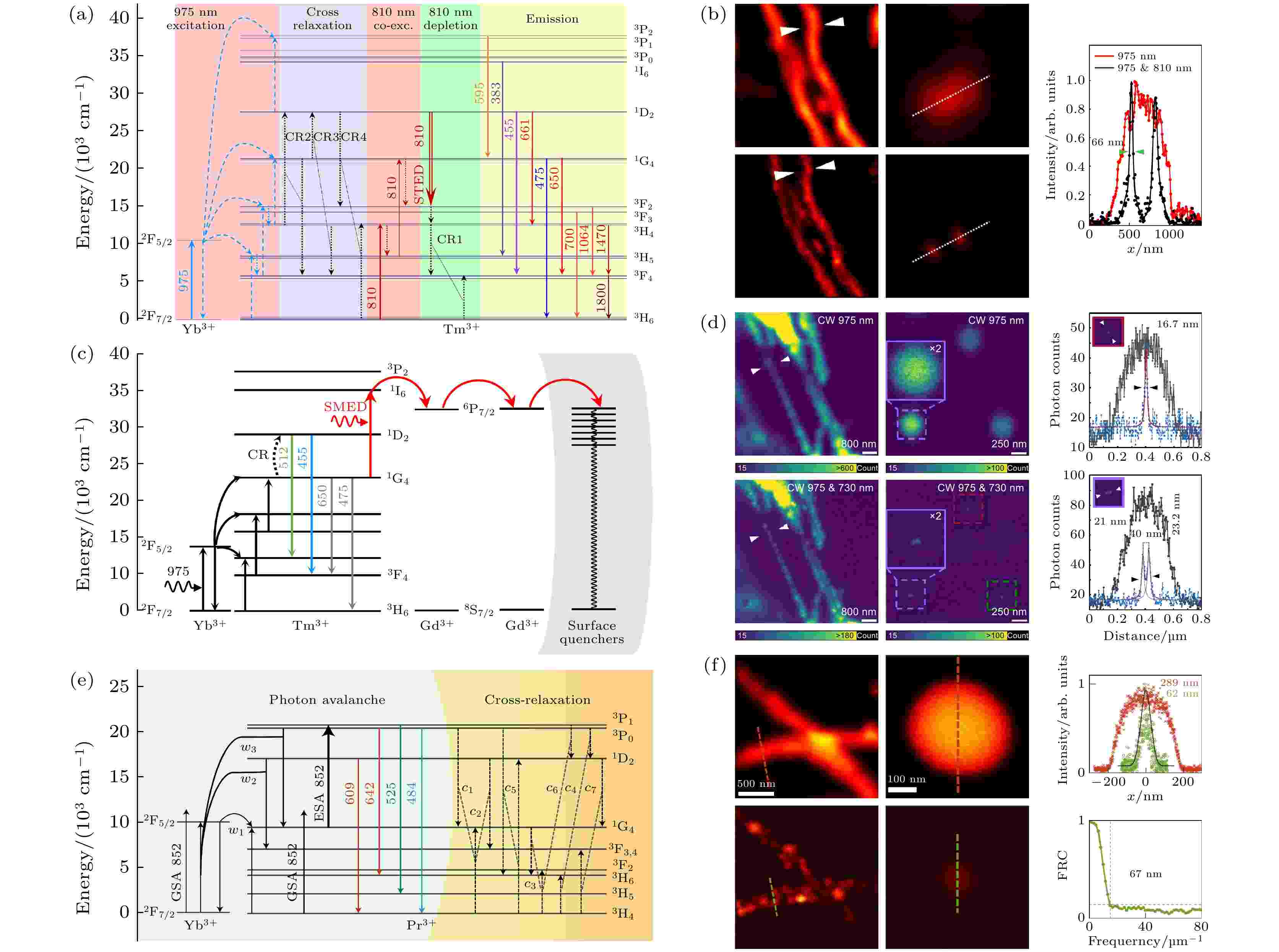
2023, 72 (20): 204201.
doi: 10.7498/aps.72.20230912
Abstract +
Laser point-scanning fluorescence microscopy serves as an indispensable tool in the life science research, owing to its merits of excellent resolution, high sensitivity, remarkable specificity, three-dimensional optical-sectioning capability, and dynamic imaging. However, conventional laser point-scanning fluorescence microscopy confronts a series of challenges in the rapidly evolving field of life sciences, because of the limitations imposed by optical diffraction and point scanning detection. Over the past two decades, substantial advancements have been made in super-resolution fluorescence microscopic imaging techniques. Researchers have developed various high spatial and temporal resolution point-scanning microtechniques, which hold great significance for biological optical imaging and other relevant applications. Regrettably, there are still few review articles covering the recent progress of this field. It is essential to provide a comprehensive review of laser point-scanning fluorescence microscopic techniques for their future developments and trends. In this article, the basic principles and recent advances in different point-scanning fluorescence microscopy imaging techniques are introduced from the perspectives of temporal resolution and spatial resolution, and the progress and applications of high spatio-temporal resolution microscopic imaging techniques based on point-scanning mode are summarized. Finally, the development trends and challenges of high spatio-temporal resolution point scanning fluorescence microscopic imaging technique are discussed.

2023, 72 (20): 204202.
doi: 10.7498/aps.72.20230900
Abstract +
Life is a highly ordered combination, and the basic biological processes of cells and tissues are essentially controlled by the structural order of biomolecular assembly, in which the conformational characteristics of biomolecule arrangement, orientation, helix, and folding are closely related to the physiological functions of biological tissues. In the skin, muscle, and nerve tissues of living animals, for instance, fibrous proteins, collagen, nerve fibers, and DNA frequently exhibit molecular spatial conformation properties such as particular alignment or helical structure, and such tissues have distinct optical polarization responses. The fundamental structural foundation for tissues to carry out certain activities is provided by molecular conformational characteristics. Early illness diagnosis will be aided by the accurate detection and efficient revelation of molecular conformational characteristics and their changes. The microscopic organization, structure, orientation, chirality, and other structural details of living things or materials can be obtained by using polarization imaging. The analysis of the imaging depth and polarization data is challenging, despite its widespread usage in the fields of material detection and biological imaging. Photoacoustic imaging preserves both the great contrast of optical imaging and the deep penetration of ultrasonic imaging by using light as an excitation source and ultrasound as the carrier for information transmission. While keeping the benefits of non-invasiveness, it is capable of high-resolution imaging, deep penetration, and functional imaging. A polarized photoacoustic imaging technology has recently been developed to complement polarization optical imaging and allow the collection of three-dimensional polarization data from deeper layers of the medium. This provides a straightforward and efficient method of measuring the polarimetry of tissues, suggesting substantial promise for both biological imaging and substance detection. The evolution of polarized photoacoustic imaging technology is outlined in this paper. First, the technical underpinnings of polarized photoacoustic imaging are described. Then, from the two applications of biological tissue imaging and nanomaterial detection, the related research progress of polarized photoacoustic microscopic imaging, polarized photoacoustic computational tomography, and polarized photoacoustic nanoparticles' molecular imaging is presented. We briefly explain the depolarization that results from particle size, density, and organization as polarized light travels through tissue. In an anisotropic medium, the change in the mid-incident polarization state of such a sample is caused by tissue birefringence and scattering because of the inherent birefringence effect of molecules, whereas in the isotropic medium, depolarization is largely determined by the density and size of the scatter. The potential applications of polarized photoacoustic imaging are then discussed.
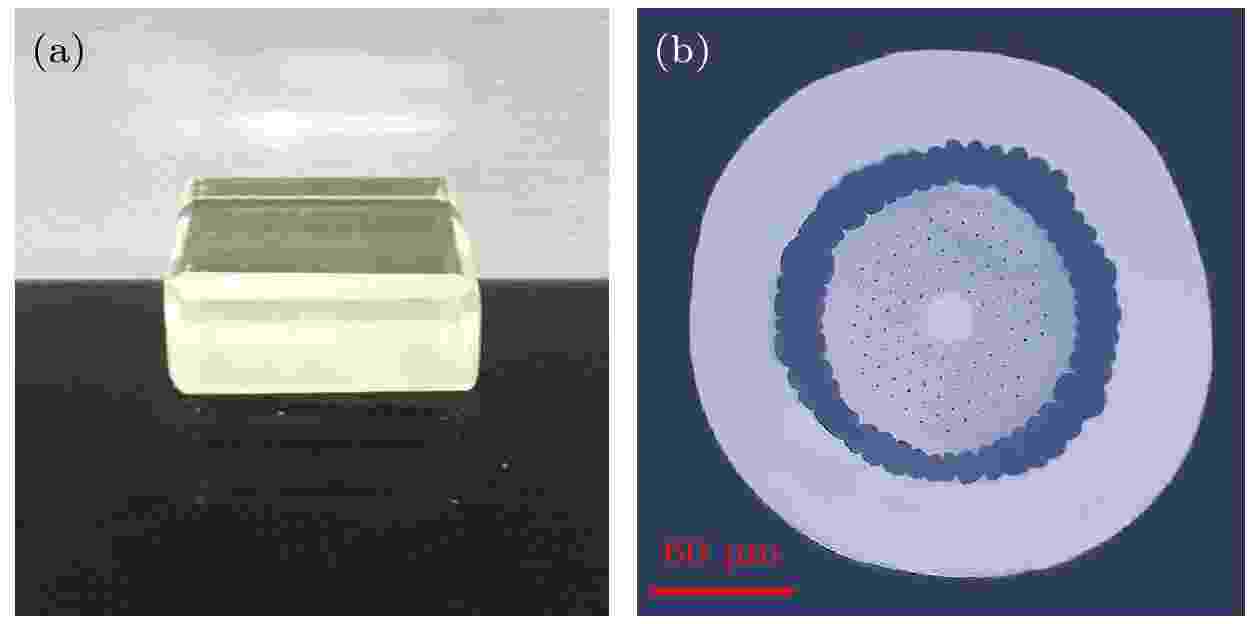
2023, 72 (20): 204206.
doi: 10.7498/aps.72.20230766
Abstract +
Lanthanum aluminum silicate glass has excellent optical properties, such as high solubility of rare earth ions, good thermal stability, and excellent physicochemical properties. Some of its physicochemical properties are similar to those of silica glass, so it is easy to combine with silica glass to fabricate special optical fibers. It is considered to be an ideal laser glass matrix material. In this paper, a series of Tm3+ doped lanthanum aluminum silicate glasses with different concentrations for xTm2O3-(70–x)SiO2-21Al2O3-9La2O3 (x = 0.2%, 0.4%, 0.6%, 0.8%, 1%, mole fraction) are successfully developed by the traditional high-temperature melting method. Using thulium-doped lanthanum aluminum silicate glass as the fiber core, thulium-doped double-cladding photonic crystal optical fibers are prepared by the stack-and-draw technique and rod in tube method. The core diameter of the thulium-doped lanthanum aluminosilicate glass double-clad photonic crystal fiber is as long as 21.7 μm, the inner cladding diameter is about 119.3 μm, and the outer diameter is about 236.8 μm. The optical properties of thulium-doped lanthanum aluminum silicate glass and its optical fiber are studied experimentally. Under the excitation of a 793 nm laser, the fluorescence bandwidth of thulium-doped lanthanum aluminum silicate glass reaches 223 nm in a wavelength range of 1550–2050 nm. The fiber laser constructed with thulium-doped lanthanum alumino-silicate glass fiber achieves a laser operating at around 2 μm. The fiber laser resonant cavity consists of a pair of dichroic mirrors. The front dichroic mirror has high transmittance for light at 793 nm and high reflectivity (99.9%) for the light within a wavelength range of 1850–2050 nm. The back dichroic mirror has high reflectivity (99.9%) for light at 793 nm and high transmittance (~ 15%) at 2050 nm. Under the experimental conditions in our laboratory, the laser power reaches 253 mW. The highest slope efficiency is 9.67%, which is close to that of the thulium-doped glass fiber laser reported in the literature. It is also found that the central wavelength of fiber laser is shifted toward the longer wavelength with the increase of the optical fiber's length. These results suggest that thulium-doped lanthanum aluminum silicate glass and thulium-doped photonic crystal fiber are suitable for 2-μm fiber laser.
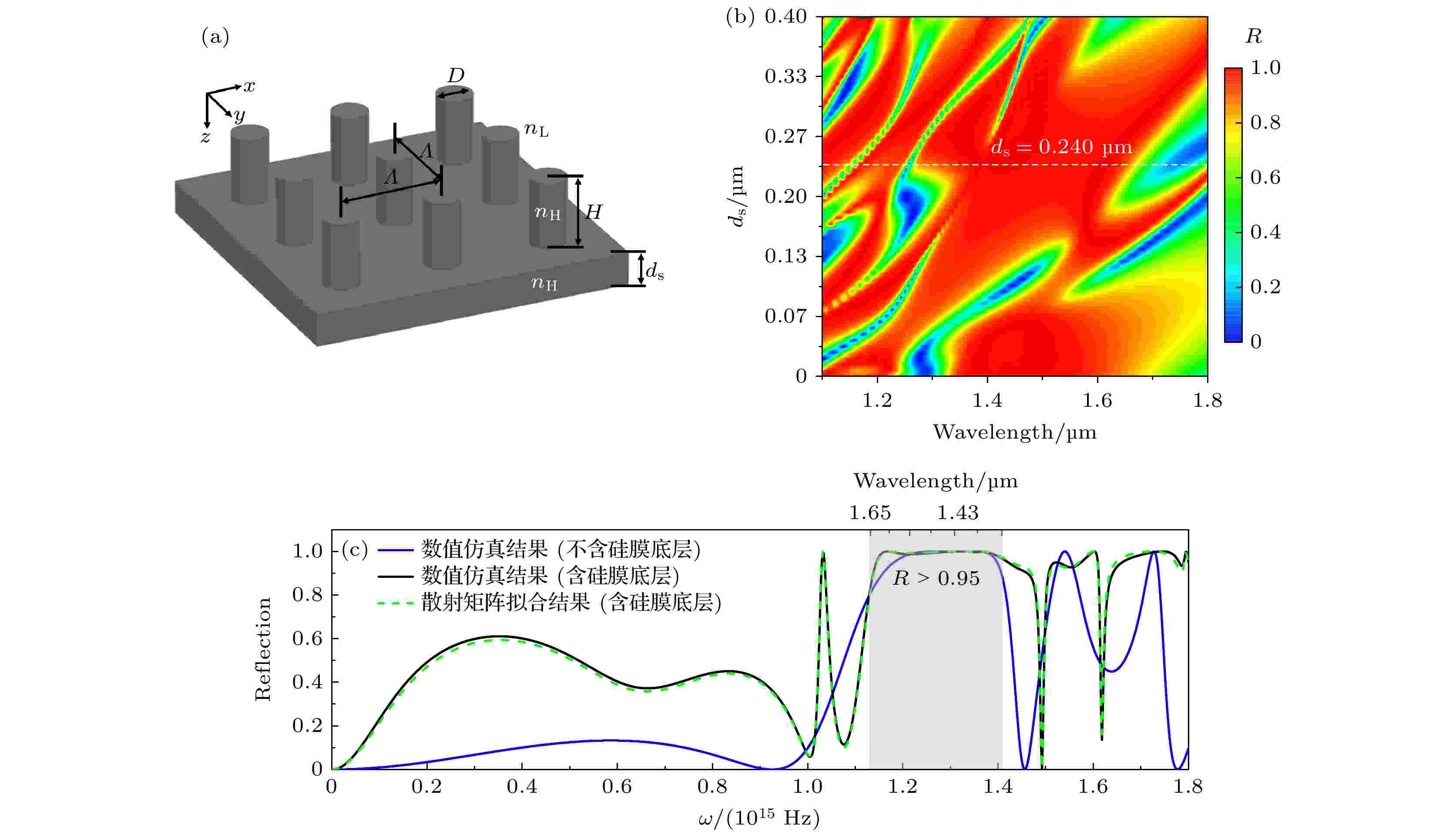
2023, 72 (20): 204205.
doi: 10.7498/aps.72.20230915
Abstract +
All-dielectric metamaterial broadband reflectors have the advantages of low loss, high reflection efficiency, and compact structure. An in-depth understanding of the formation mechanism of their reflection bands is of great significance in optimizing metamaterial structure and performance, and in further designing novel photonic devices as well. In this work, two all-dielectric metamaterial broadband reflectors are constructed by using discrete silicon nanopillar array and silicon nanopillar array connected with a silicon sublayer. The quasi-normal modes of the metamaterial reflectors are solved. Combining the quasi-normal modes with the scattering matrix theory, we obtain the fitted reflection spectra of the metamaterial, and then reveal that the zero-frequency quasi-normal mode has a substantial influence on the accuracy of the fitting results. A dispersion relation analysis method is proposed to accurately solve the zero-frequency quasi-normal mode. Furthermore, the fitted resonance reflection spectrum and background reflection spectrum are obtained by using high-Q-value quasi-normal mode and low-Q-value quasi-normal mode, respectively. Our results show that the broadband reflection of the considered metamaterial reflectors should be attributed to the background reflection induced by the low-Q quasi-normal modes. The research method proposed in this paper can also be used for discussing quasi bound states in the continuum, Mie resonances, and other resonance phenomena, which provides a new way for interpreting the spectral characteristics of metamaterials.
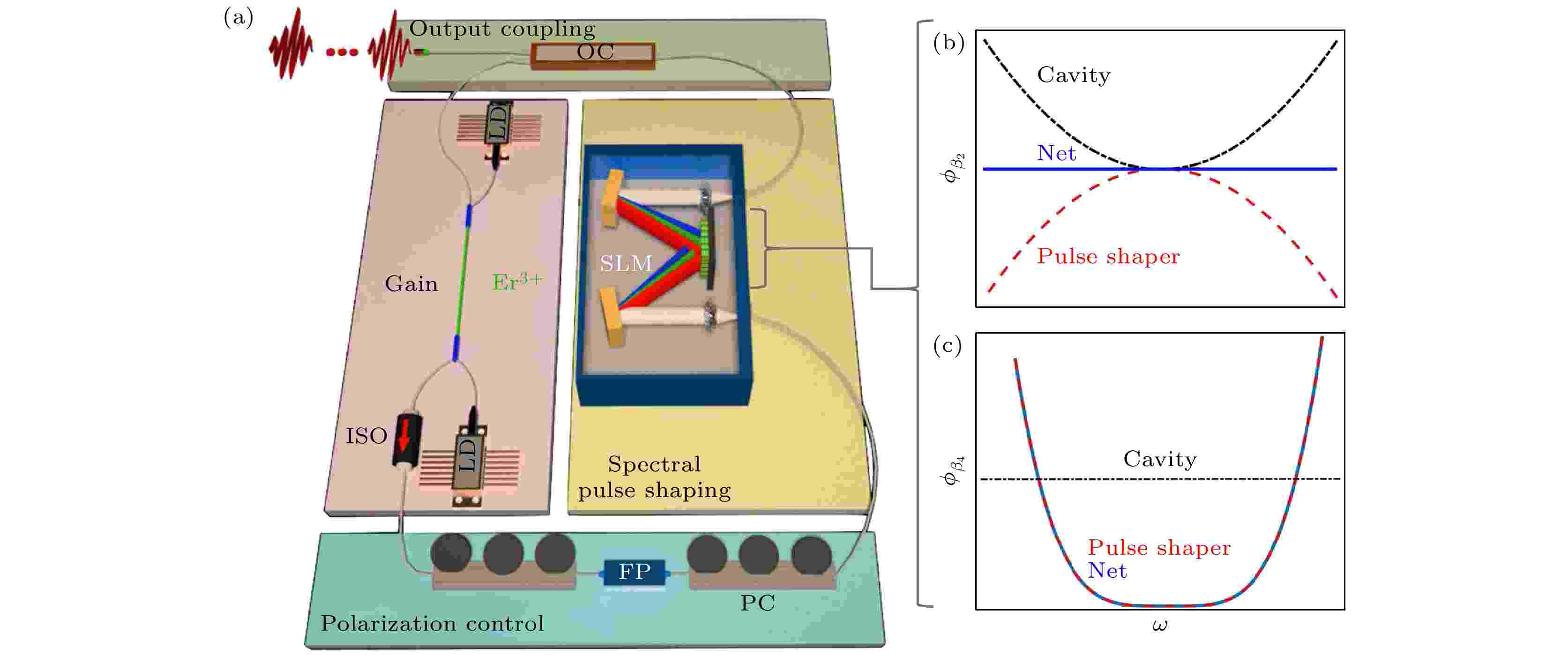
2023, 72 (20): 204203.
doi: 10.7498/aps.72.20230868
Abstract +
The pure-quartic soliton fiber laser is an innovative ultra-short pulse laser that can maintain a stable pulse shape through a balance between fourth-order dispersion effect and self-phase modulation effect. Comparing with traditional soliton laser that is dominated by second-order dispersion, the mode-locked pulse energy of pure-quartic soliton laser can be 1–2 orders of magnitude higher. This provides researchers with new ideas for developing high-energy and high-peak-power fiber lasers. Here, the generation and transmission characteristics of pure-quartic solitons in nonlinear optical systems such as fiber lasers in recent years are systematically reviewed. It also explores some special transient dynamic phenomena. Furthermore, in this article, the latest achievements of our research group in this area are also presented. Finally, the application prospect and development trend of pure-quartic soliton fiber lasers are prospected. These results will contribute to a more comprehensive understanding of the basic physical properties of pure-quartic soliton fiber lasers.








